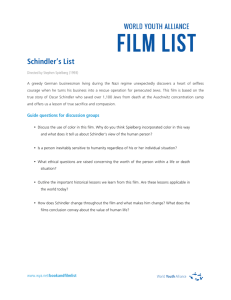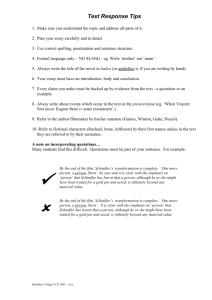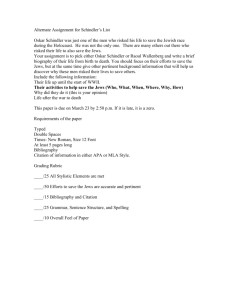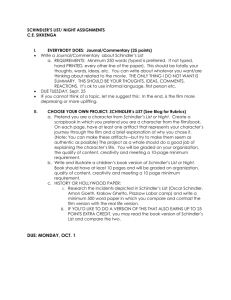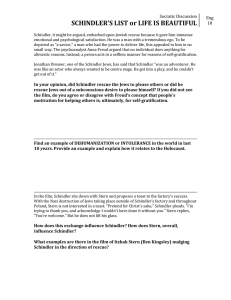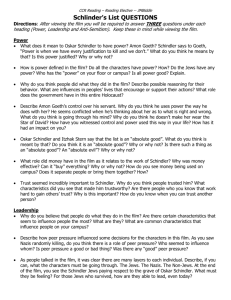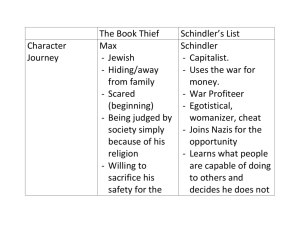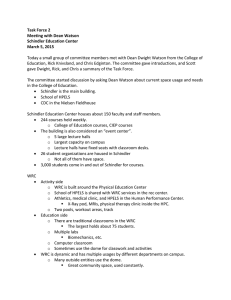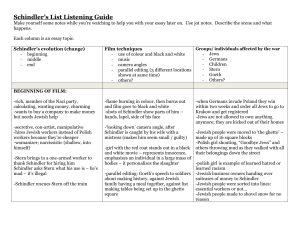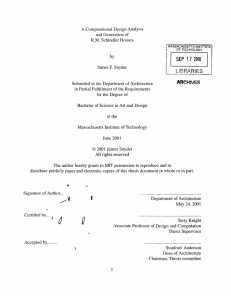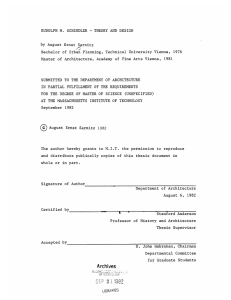Schindler's List
advertisement
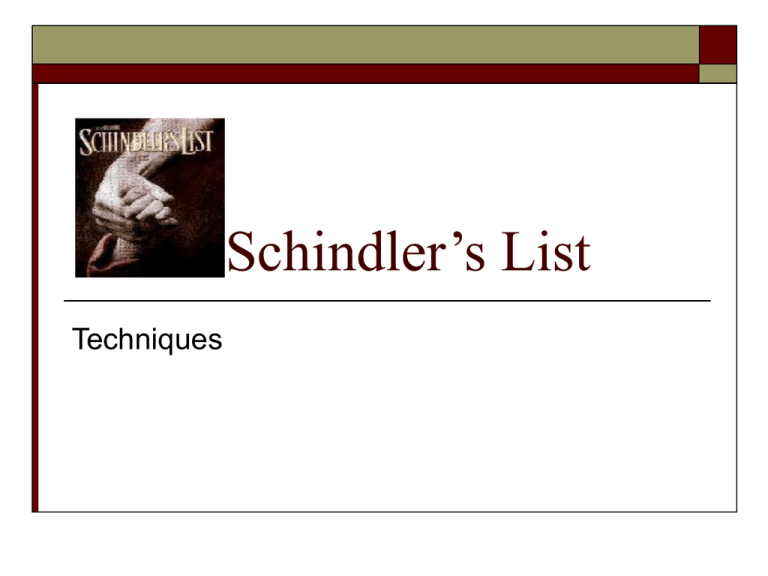
Schindler’s List Techniques Long Take A shot which focuses on something or someone for longer than the rest of the film is emphasising a character and allows the audience to become more involved Examples: Schindler’s badge Star of David bands Gold teeth Dead girl in the red coat Subjective Camera Angle View things from a particular person’s perspective When we follow someone’s gaze Makes us sympathise with them and to understand their thoughts Examples: Massacre in ghetto where we see Schindler follow the girl View Schindler from wife’s perspective Camera Position In front – helps us feel intimacy as if they are looking/talking to us (Stern cries at end) Behind – mysterious and diminishes sympathy (Schindler at beginning) Below – makes them appear dominant (First image of Schindler’s face in club) Above – makes them look small (Schindler, when his wife looks at him) Distance of shot Close up – where the image is focused on in detail (can suggest importance, sympathy) Extreme close up – not all of the image is in the frame, (can feel claustrophobic) Long shot – can make the person seem small Parallel Editing Where two scenes occur at the same time and are interwoven with each other Illuminates the stark difference between the scenes Examples: Jews forced out of their home and the comfort of Schindler Goeth and Schindler before the massacre in the ghetto Lighting Used to create mood Low lighting to suggest something dark and sinister Example: opening scene where the family vanish Lighting from above highlights importance of character Example: when we first meet Schindler Sound Music – throughout is sombre, created through use of strings (emotive sound) Sound from within the film such as the train at the beginning and the crying baby at the entrance of the ghetto Black and White Colour intensifies emotion, so Spielberg’s lack of colour, particularly in the violent scenes, allows him to be explicit without becoming tastelessly graphic and gory Adds to our sense of watching something real, a past historical documentary Also suggests the dark and grim world the characters inhabit Colour Only a handful of colour scenes in this film Highlights key scenes Colour is used to symbolise hope and innocence through the candles and the little girl in red coat Set/Setting Design of set – authentic historical props such as typewriters Almost all in winter – bleak and cold Camps are muddy as we see when the Jews are forced to run in mud during selection Close up of their feet running in mud Focus on wire to remind us of their imprisonment Real place names give to give credibility Other Techniques Structure – optimistic hopeful conclusion Dialogue – look at what the characters say to reflect theme and characterisation Motifs – (symbols) names and lists used to reveal the way in which Jews were dehumanised
